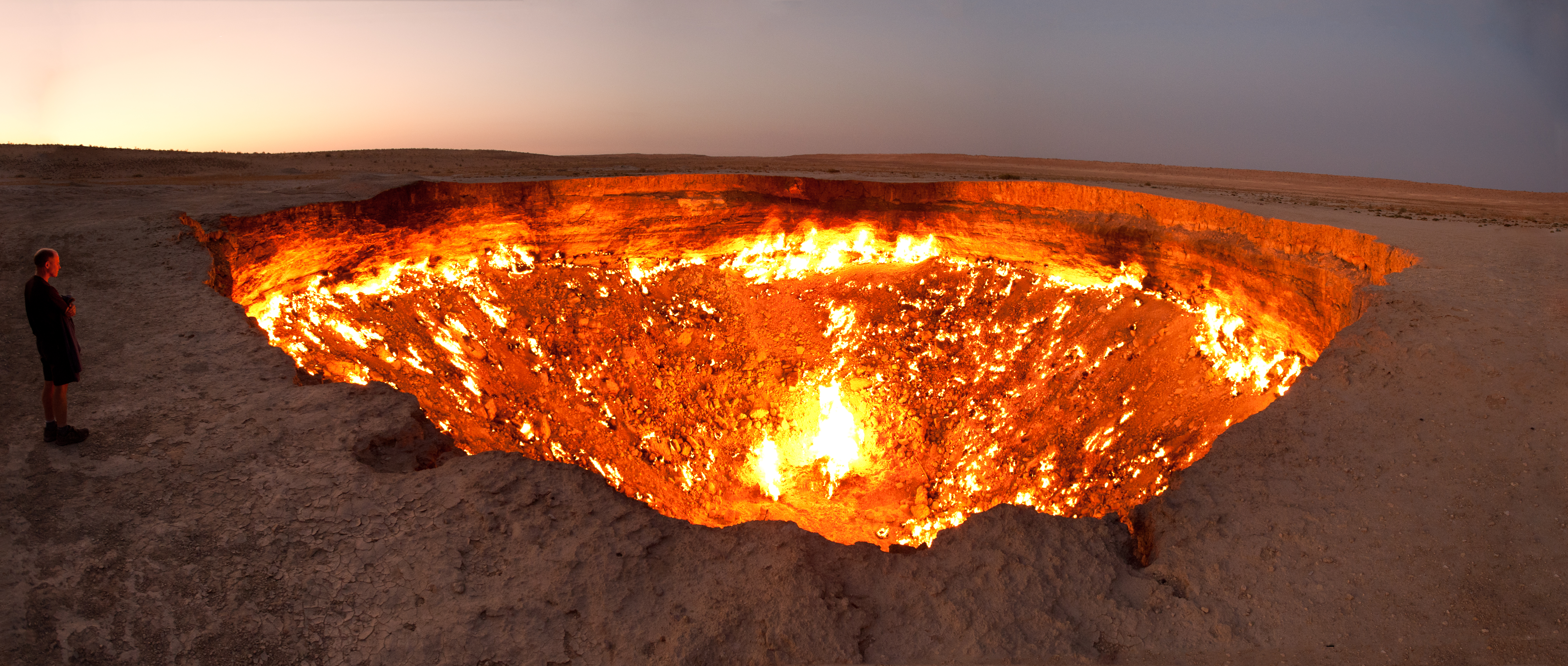The ‘Gateway to Hell’ or ‘Darvaza Gas Crater’, a popular tourist attraction in the Karakum desert in northern Turkmenistan, is likely to be shut for good. This massive fire pit is believed to be a result of a Soviet drilling accident in 1971 after technicians struck a large gas cavern in the 3.5 lakh sq. km desert.
Since then, the pit has stayed ablaze as all attempts to extinguish it failed. The crater is 70 m wide and 20 m deep and has also been a popular tourist attraction. In 2018, Turkmenistan President Gurbanguly Berdymukhamedov renamed the crater as the “Shining of Karakum”.
According to reports, the President has announced plans to finally extinguish this five-decade-old fire in a large giant crater. Berdymukhamedov appeared on state television on January 8 as he ordered officials to begin putting out the flames in the ‘Darvaza’ crater in the Karakum Desert. He backed his decision citing environmental and economic concerns.

“We are losing vital natural resources that could have been of great benefit to us. We could have used it to improve the lives of our people”, Berdymukhamedov said. He instructed his officials to “find a way to put out the fire”.
However, this is not the first time when Turkmenistan has made an effort to extinguish this fire. Berdymukhamedov, who has been serving as president since 2007, also ordered experts to come up with ideas to bring this raging blaze under control in 2010.
Turkmenistan’s ‘Gates Of Hell’
It is believed that in 1971, geologists from the erstwhile Soviet Union were searching for crude oil deposits in the Karakum desert. During the excavation, the ground beneath the drill rig collapsed.
There was a danger of methane leaking from these pits, which could then dissolve into the atmosphere. To stop this, the geologists set fire to one of the pits. They thought that by doing this, the entire methane would get exhausted in a span of a few weeks and the fire would die down on its own.
However, George Koronis, a Canadian explorer, says that he is unable to verify this theory in the absence of any concrete evidence. In 2013, as part of a program being made for the National Geographic channel, a search team comprising Koronis reached the desert area of Turkmenistan.
But to his dismay, instead of obtaining answers to all of his questions, Koronis’ investigation sparked more questions. Some geologists in Turkmenistan claimed that this massive crater was created in the 1960s, and it caught fire in the 1980s.
According to historian Jerónim Perovic, the mysteries surrounding the ‘Gates of Hell’ makes complete sense. “This is an indication of how things worked during the Soviet Union. At that time only those campaigns that were successful were made public, but the unsuccessful ones were not told. If the local people have done something wrong, they don’t want others to know about it”, Jerónim told the BBC.
Since the pit of fire had emerged in the center of the desert, it did not pose any serious threat to life and property, and its effects were also considered to be negligible.
Furthermore, at that time, the Soviet Union had plenty of natural gas or fuel. It reportedly produced seven lakh cubic meters of natural gas every year, according to experts. Keeping these points, burning of the gas to curb its spread seemed to be a viable option for the Soviets.
“A country like Switzerland used to use 15 thousand to 16 thousand cubic meters of natural gas every year, but burning four times of it was not a big deal for the Soviets. Instead of thinking rationally about this, they would have decided to burn it in order to put it in the pipeline and move it. They would have had to do massive construction work here to move the natural gas elsewhere,” Perovic said.
Stephen Greene, a microbiologist who was also a part of the Koronis search team, said that “letting methane into the environment uncontrollably is a bad idea and that the decision to burn it is understandable…It could have been very dangerous. Because as long as the fire continues, the methane will not accumulate in one place, otherwise there would be a risk of a big explosion from time to time”.
While releasing carbon dioxide into the atmosphere is also extremely harmful, it is still a better alternative than releasing methane gas into the atmosphere. A number of countries such as Iraq, Iran, and the US are known to burn the gas instead of letting it into the atmosphere. To this, Perovic said that “unfortunately this is a problem for which no solution has been found so far”.
- Written by Kashish Tandon/EurAsian Times Desk
- Contact the author at: kashishtandon21@gmail.com
- Follow EurAsian Times on Google News